00:46
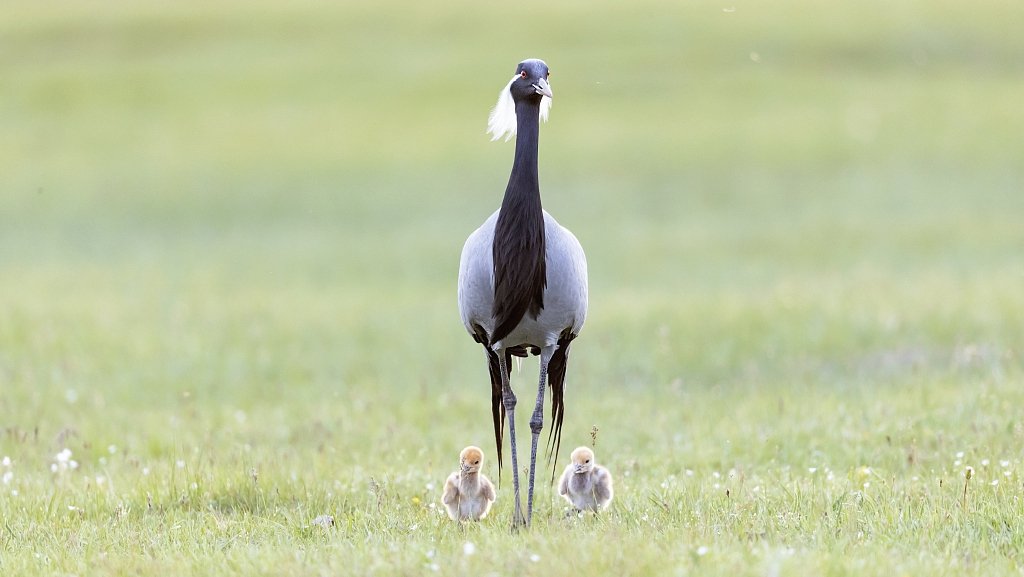
Delicate appearance:
The name "demoiselle", which means damsel, or young lady in the French language, was given by the last French queen Marie Antoinette, for its maiden-like appearance. It is the smallest among the nine crane species in China in terms of body size.
The two distinguishing characters of the crane is its long white feather plumes that stretch from the eye to beyond the head and long black feathers hanging from the breast.
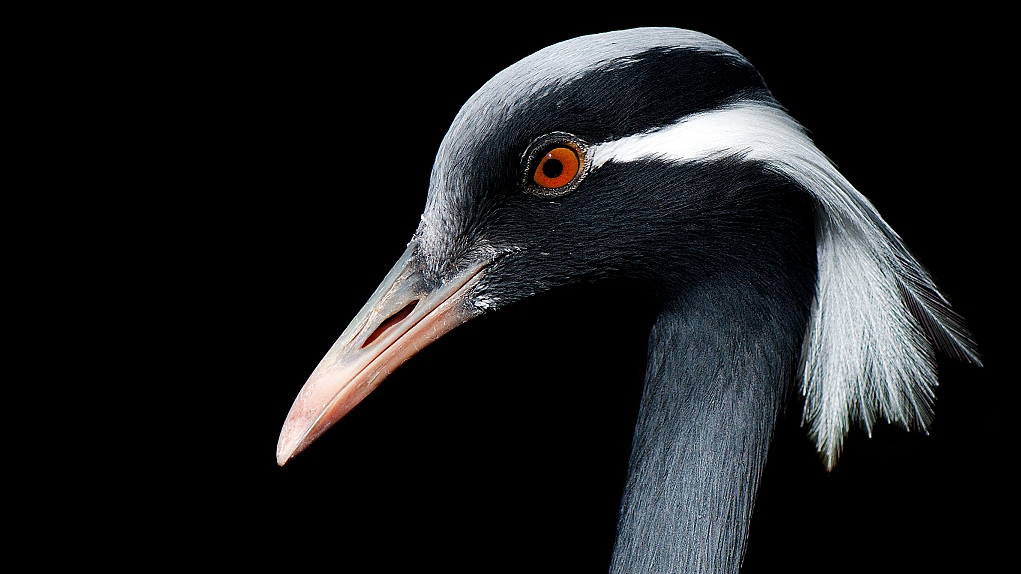
Demoiselle's white feather plumes stretch from eye to beyond the head. /VCG Photo
Demoiselle's white feather plumes stretch from eye to beyond the head. /VCG Photo
Toughest migration journey:
Every year, tens of thousands of the fine cranes get together and embarking on a journey from its breeding grounds in Eurasia all the way to their wintering grounds in India. Scientists have mapped three routes in China. All of them bring them to the highest mountains in the world - the Himalayas. and that isn't the best part: the Japan Times reported that they have been filmed flying way above the 8,848-meter peak of Mount Everest. Many die of exhaustion, but the journey continues every year.
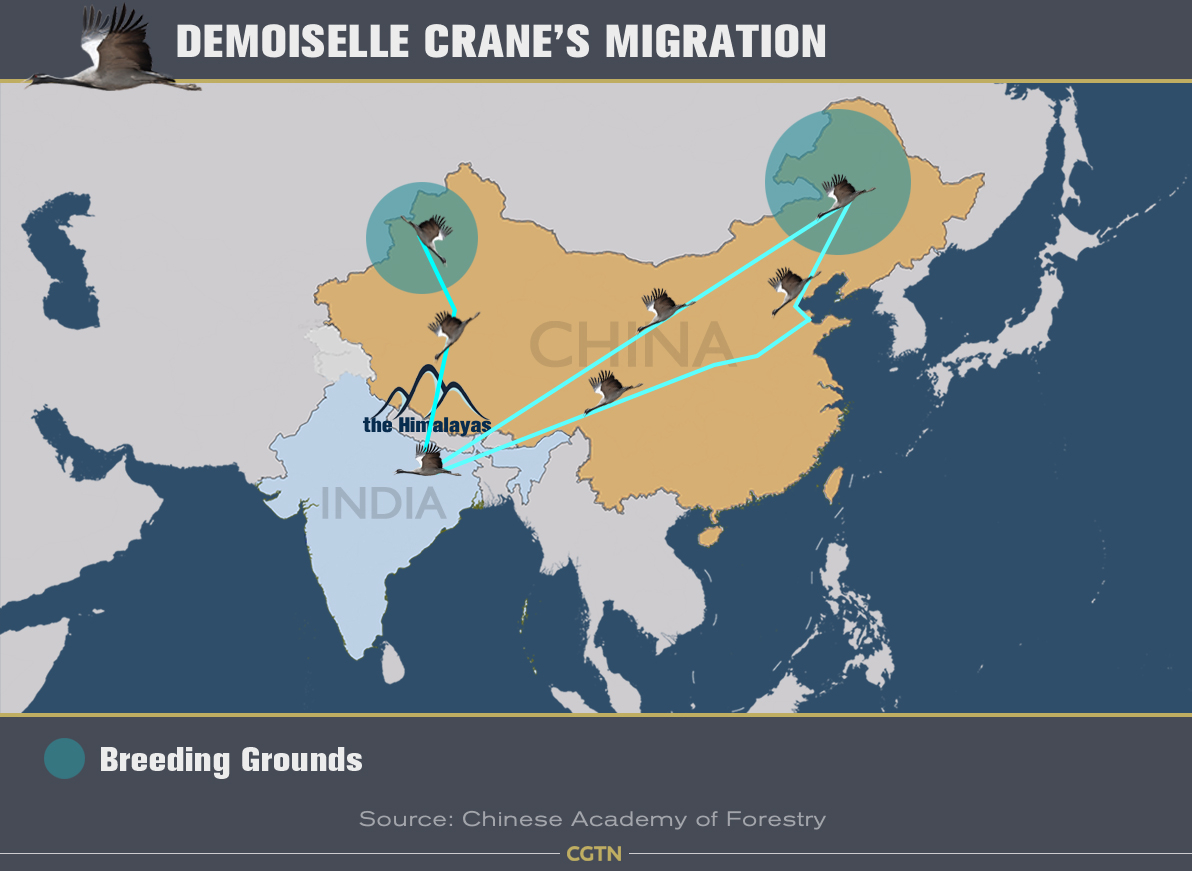
Demoiselle crane's migration routes in China. /CGTN Photo
Demoiselle crane's migration routes in China. /CGTN Photo
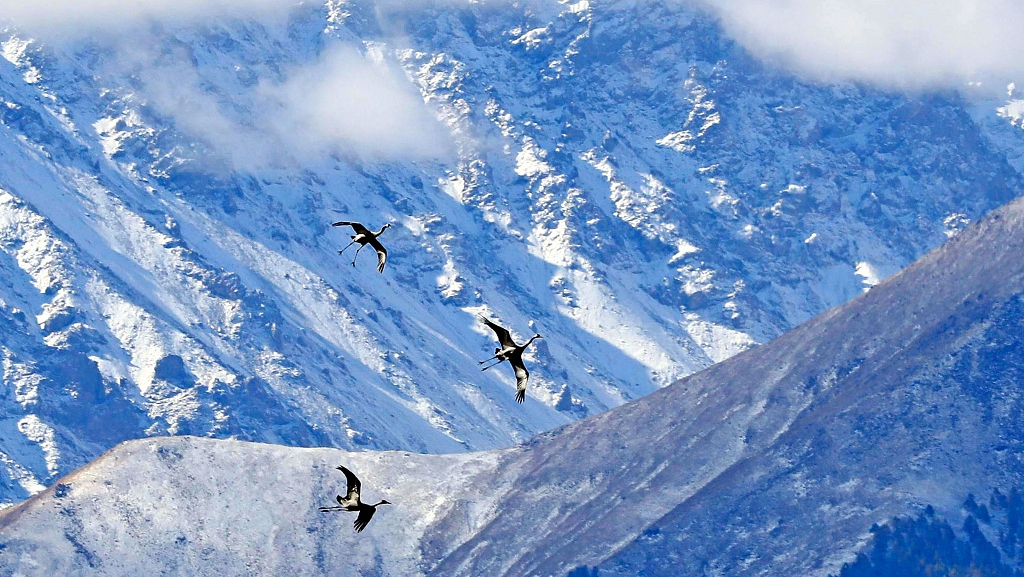
Demoiselle cranes flying over mountains. /VCG Photo
Demoiselle cranes flying over mountains. /VCG Photo
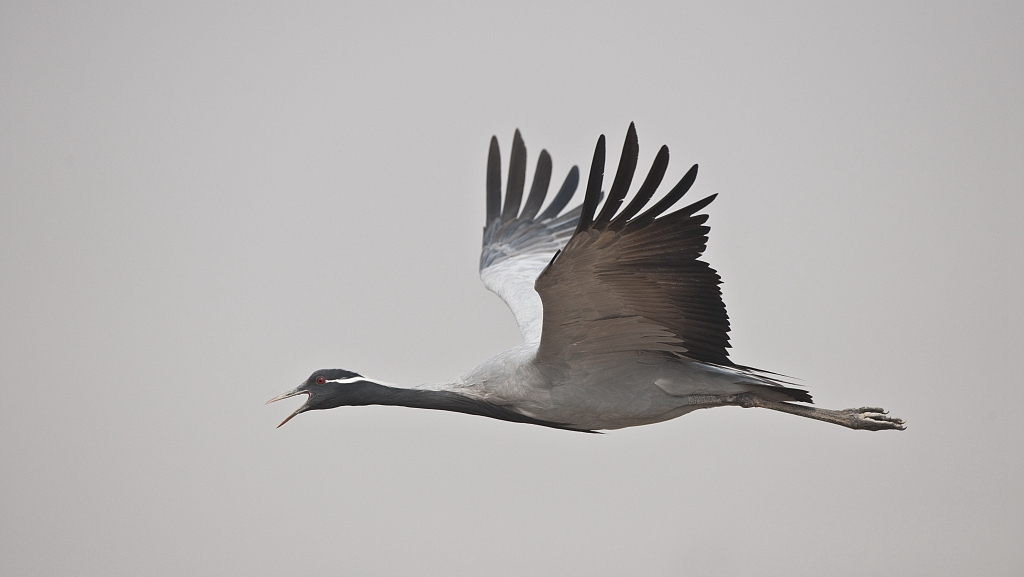
Demoiselle crane in flight. /VCG Photo
Demoiselle crane in flight. /VCG Photo
Places to get a glimpse of them in China:
China has two major breeding grounds for the crane: one in the northwest, mostly in Xinjiang Uygur Autonomous Region, and another in northeast, including Inner Mongolia Autonomous Region, Heilongjiang and Jilin provinces.
Two nature reserves are recommended. The Balikun Wetland Reserve which has the second largest prairie in Xinjiang, and Zhalong National Nature Reserve in Heilongjiang Province which has recorded six crane species and thus is considered a major habitat for all cranes in China.
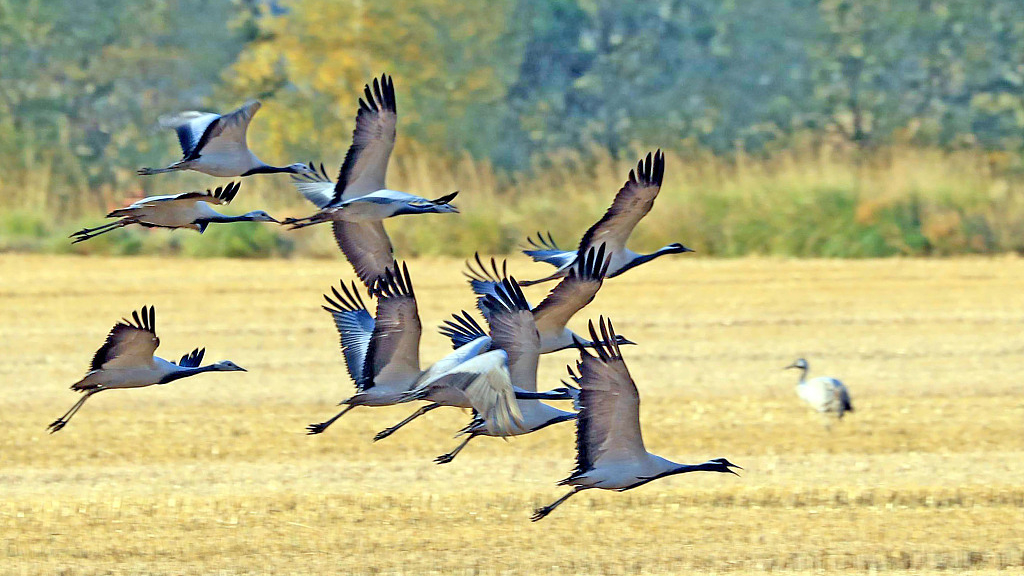
Demoiselle cranes in Balikun Wetland Reserve. /VCG Photo
Demoiselle cranes in Balikun Wetland Reserve. /VCG Photo
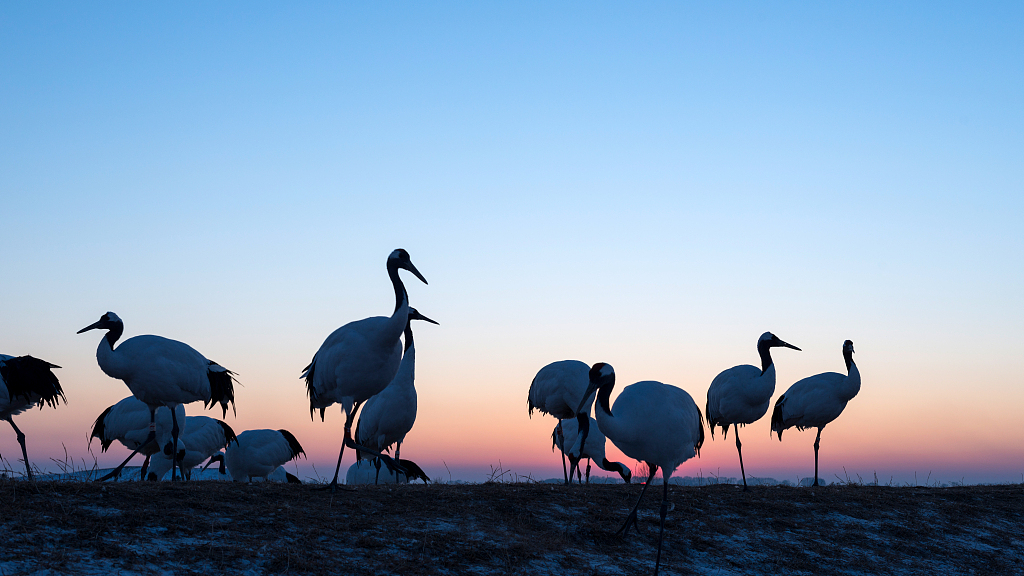
Cranes in Zhalong National Nature Reserve. /VCG Photo
Cranes in Zhalong National Nature Reserve. /VCG Photo
Protection efforts:
The demoiselle has second-level state protection, and is listed as the least concern on the Red List of the International Union for the Conservation of Nature (IUCN).
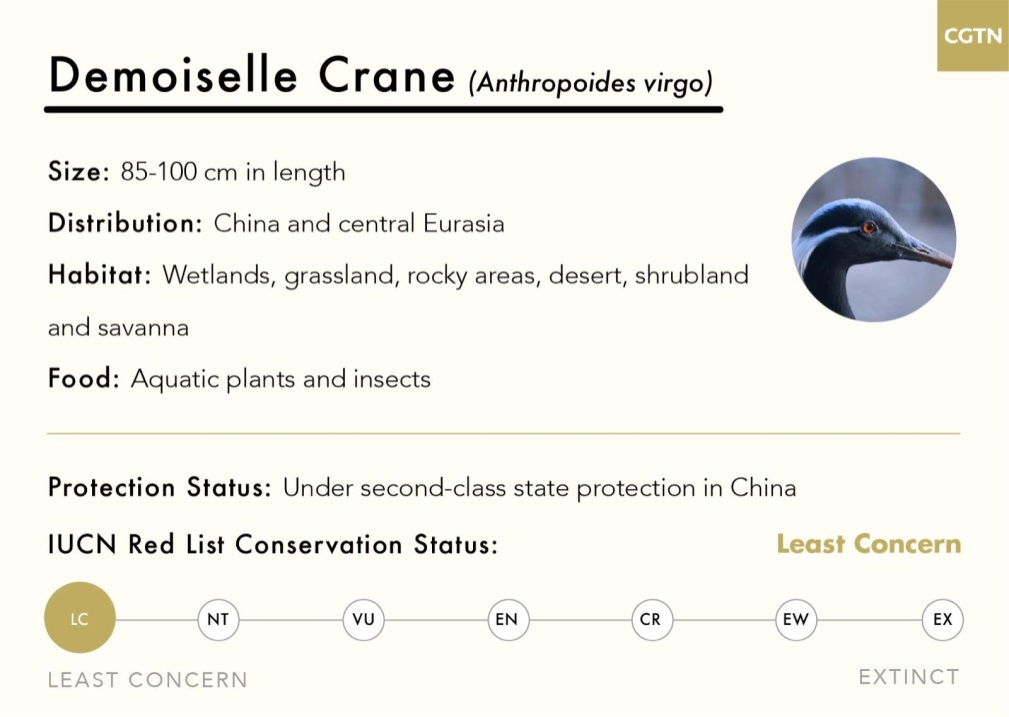
Information on demoiselle crane's protection. /CGTN Photo
Information on demoiselle crane's protection. /CGTN Photo
Currently, there are no natural reserves in China specifically designated for the protection of the demoiselle crane, but out of the over 260 wetland reserves across the country, over 70 are habitats for all nine crane species, which are all under state protection.
At the same time, China has been active in international cooperation on crane conservation. China is a member of the North East Asian Crane Site Network together with other five member states including Russia, Mongolia, the Democratic People's Republic of Korea (DPRK), South Korea and Japan. The country has also been collaborating with other international organizations such as the International Crane Foundation.
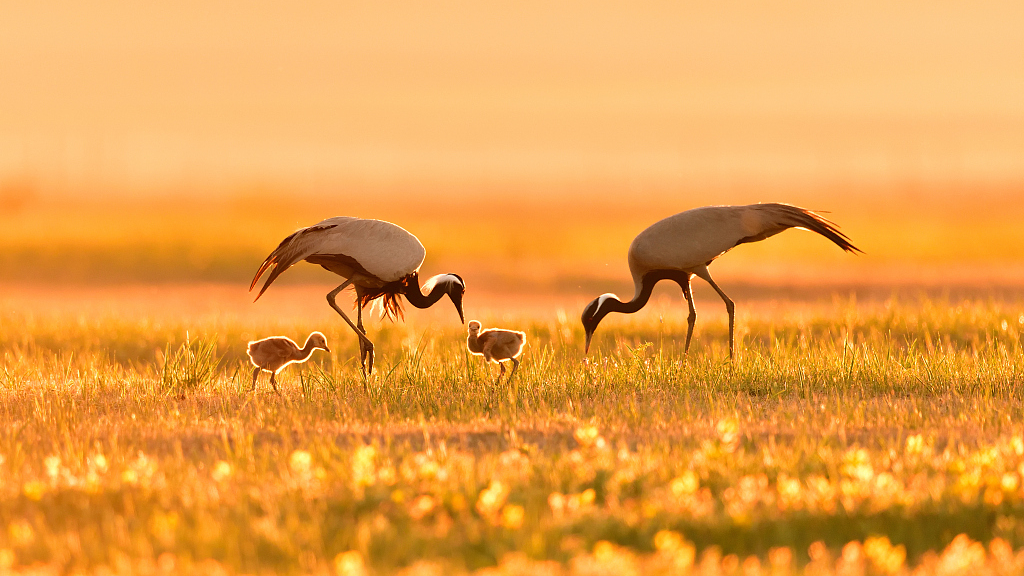
Two demoiselle cranes, baby cranes, foraging on grassland. /VCG Photo
Two demoiselle cranes, baby cranes, foraging on grassland. /VCG Photo
Living conditions:
Despite great conservation efforts in the country, the living conditions of the crane, like many other migratory birds, are not very optimistic. There are three major challenges facing all migratory birds: hibitat loss, farmland pesticide and poaching. Between economic development and ecological protection, the latter is losing the struggle as construction has taken up more and more of the already shrinking wetland. Incidents of birds being poisoned after foraging on farmland that uses pesticides have also been recorded.
(If you want to contribute and have specific expertise, please contact us at nature@cgtn.com)